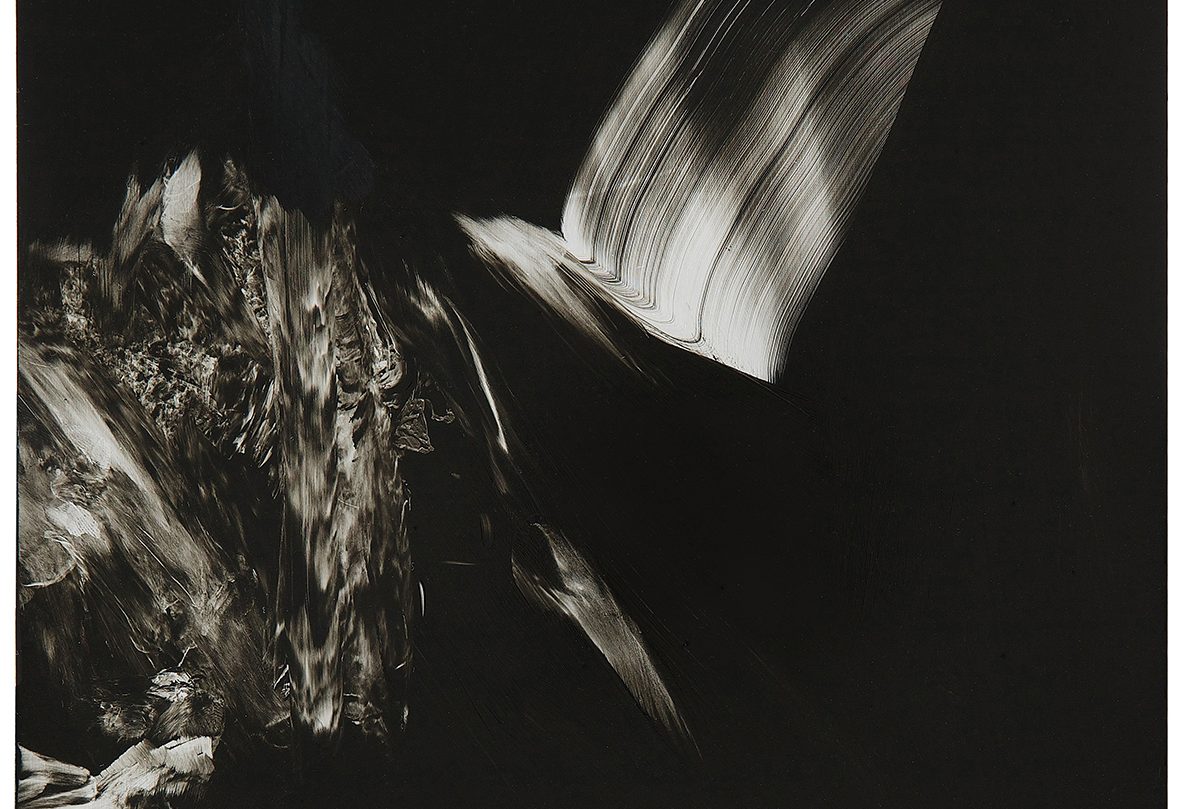The work of Camberwell PhD student Jim Threapleton explores the potential relationship between corrosion, painting and the sublime. As part of his studies Jim recently exhibited a series of his paintings and prints at Camberwell. We caught up with him to find out more about the exhibition and his experience as a PhD student.
Tell us about yourself and your background, what led you to undertake your PhD at Camberwell?
I’m a painter and filmmaker. My route to a Camberwell PhD was fairly circuitous. I don’t have a traditional Fine Art background. I originally studied the History of Art at Manchester University before going on to work in film as a screenwriter and director. The improvisational methods of my BIFA nominated feature debut, Extraordinary Rendition, provoked my initial return to painting and a subsequent MA in 2010. The PhD seemed a very necessary continuation of what had developed on the MA.
Introduce us to your practice/research and the work shown in your recent exhibition
The exhibition includes both paintings and print works. Loosely speaking it explores how paint moves, by that I mean in terms of its plastic immediacy and its subjective potential. The paintings are artefacts, unreliable memories of a hunt for a tipping point where figuration collapses into gesture — into the smear of a rag through oil on metal.
In terms of theory the work is framed by an exploration of abject sublime – an exploration that tracks a downward trajectory for the sublime through mid-century painting and looks for improbable common ground between artists like Barnett Newman and Francis Bacon.
Tell us about your use of materials and creative process
I work with oil paint on metal supports, generally either stainless steel or aluminium. Metal is incredibly fast — it has this seductive kinetic potential. There is no friction, no tooth to slow mark. My process begins with the black monochrome from which I try to excavate form on the threshold of resemblance. The way I paint is very intuitive and unplanned so when accident and intent come to a point of cohesion it’s incredibly rewarding, but unfortunately rare, for me anyway. It’s the throw of a dice.
How has your time at Camberwell influenced/developed your practice?
The PhD has suffocated my practice — in the most positive way. The necessarily narrow focus of pursuing a research project forces you to examine a hunch until it is thoroughly exhausted. Under these conditions my language as a painter has developed in unexpected ways.
What are your plans for the future?
I have a solo show coming up in mid-September which will be an exhibition of my PhD work. Beyond that I’m looking to expand my teaching here at UAL. I also hope to publish certain aspects of my research.
Tell us a bit about a recent exhibition you have visited, or are looking forward too.
I caught Michaël Borreman’s recent show at David Zwirner which was fairly impressive as a presentation. As are the large scale, gestural sculptures at Marc Quinn’s show The Toxic Sublime at White Cube, Bermondsey. I’m also looking forward to a Luc Tuyman curated show of abstract art from Belgium coming up at the Parasol Unit.
Any words of advice for prospective PhD candidates?
Take your time to find the right supervisors. Do it at CCW. And if at all possible, specifically at Camberwell!
Jim is currently showing his PhD work in a solo show at the Serena Morton Gallery. The exhibition runs from 11 September – 2 October. For further information please visit the gallery’s website.
Related links:



